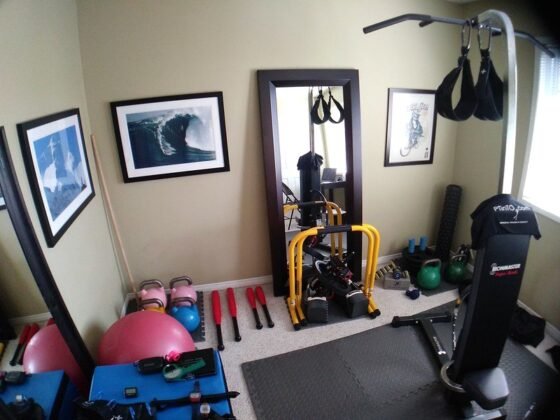Table of Contents Show
High humidity is a curse, especially when it’s summer. Apart from a sweaty back, it brings on several damaging effects on your home. The list includes mold growth, condensations, wood rot, and several structural damages.

The sweet range of indoor humidity is 30-35% in summer. In case you sense a way higher RH(Relative Humidity) in the house, this article is going to help you out to overcome it.
Take a break of a few minutes and check out our full-fledged list of 7 tips to lower indoor humidity-
How do You Check the Humidity Level if it is High?
Before stepping in to prevent the excess humidity, we have to be certain about its existence anyway. We’ve got two simple methods in this regard-
Using a Hygrometer
Hygrometers measure the moisture levels in the air. They are quite budget-friendly and available in any hardware store. If the measurement shows anything over 45-50% of humidity, we have a high humidity situation.
Using a Wet and Dry Bulb Thermometer
If you don’t want to spend bucks after a new hygrometer, you can use a wet and dry bulb thermometer to measure the humidity. It’s referred to like a certain kind of thermometer which is quite easy to use as well. But you have to wait for up to a few hours to get the result.
7 Tips on How to Lower Indoor Humidity
Read Also:
- What Should You Do When Your Old Boiler Starts Making Weird Noises?
- Heat Pump vs. Furnace: Which Is the Best Way to Heat Your Home?
- 5 Reasons to Switch to Inverter Type Air Conditioners
- Why Is Your Air Conditioner Not Blowing Cold Air
- The Ultimate Guide to Heat and Air Repair
- Benefits of Split System Air Conditioners
Use Air Conditioner
Humidity and temperature go hand to hand, and it’s an HVAC 101. That gives us a verdict that, using an air conditioner that produces cool air, will take the temperature down and replace the warm and humid air from your house or indoor garden.
In the market, there are a handful of variations in terms of price, air conditioning capacity, size, and portability. Based on the area you want to condition; you should pick up the right one.
Also, to get the most out of our air conditioner, you have to optimize and tune it up. To keep the humidity level under control, you also need to frequently change the AC filter anyway. Remember, anything that restricts the airflow of the AC is no friend of yours.
Install Exhaust Fan
Whenever you cook or take a shower, an extra production of humidity takes place. If you don’t take any step to exhaust the humid air out, it will eventually spread through the entire home.
One of the quickest and most cost-effective ways to vent out that extra humidity is to use an exhaust fan. As an example- installing one in the kitchen (near to the cooker) and one in the bathroom will be effective enough. If you have other sources of constant or occasional humidity, use one exhaust fan for each of them.
Set up a Dehumidifier
The name ‘Dehumidifier’ quite expresses the purpose of this device. It’s simply the opposite of what a humidifier does by producing humid air. Running the dehumidifier at the right place for the right amount of time will bring the humidity level under the tolerable limit.
Having said that, there are a number of variations of dehumidifiers in the market. Each of them has their own style of dehumidifying, backed up by additional features.
Have a look-
- Heat Pump Dehumidifier: Needs a fan, a heat pump and a heat exchanging coil to remove moisture from the air. Price varies from $150 to $1500.
- Dehumidifying Ventilator: As its name sounds, it works by using an exhaust fan to expel the air out. Usually used in basements, attics and other crawlspaces.
- Chemical Absorbent Dehumidifier: They contain hydrophilic materials such as silica gel. They are more cost-effective but are of single-use.
- Homemade Dehumidifier: This is quite of a DIY type dehumidifier, used for short term dehumidifying chores. It can be made out of charcoal road salt and de-icing salt.
From four of the aforementioned variations, you can use top rated dehumidifier based on your purpose, budget and the place you want to take humidity out from.
Take Cool Showers
A hot shower is equal to humid air. So, you already know that hot showers are the enemy of home comfort in terms of the production of humid air. Although we love to take that in winter, it would be better to turn it down to as little as possible for the sake of humidity.
But we are not saying to switch to ice baths anyway. All you have to do is to lower the water temperature of your shower by a few degrees. So, not much steam would generate while you’re under the shower.
Fix any Leaks in the Pipe and Faucet
Leaking pipes and faucets spray water into granular form. And it’s quite likely to convert into vapor from such streams. In case you’re trying to take humidity down in your room, such leaks that keep humidifying the room is the last thing you would like to see.
Therefore, torch the pipes and faucets for any leaks, and once found, fix them up on an immediate basis. You can start the search by looking for stained drywall, wet spots, etc. that are consequences of hidden leaks in the pipe system.
In case there is any pipe that doesn’t have a leak but is exposed, wraps it up with insulators. This will keep the air from condensation.
Move the Plants that Produce Moisture
Many of us have a lot of indoor plants at home. They might be very lively and beautiful, but some of them can be terrible sources of vapor. There is a physical process of the plants called transpiration which produces the extra vapor and released in the nearby air.
If you have an abundance of such plants, we suggest relocating them into an insulated room or to place outside maybe.
Replace Your Carpets
Although they are not direct producers of humidity, some certain types of carpets play a strong role in retaining moisture. If so, they will quietly contribute to keeping the moisture level high and you won’t even be aware of it.
We suggest replacing your carpets with non-moist area rugs. The best way is, therefore, not to use any at all.









